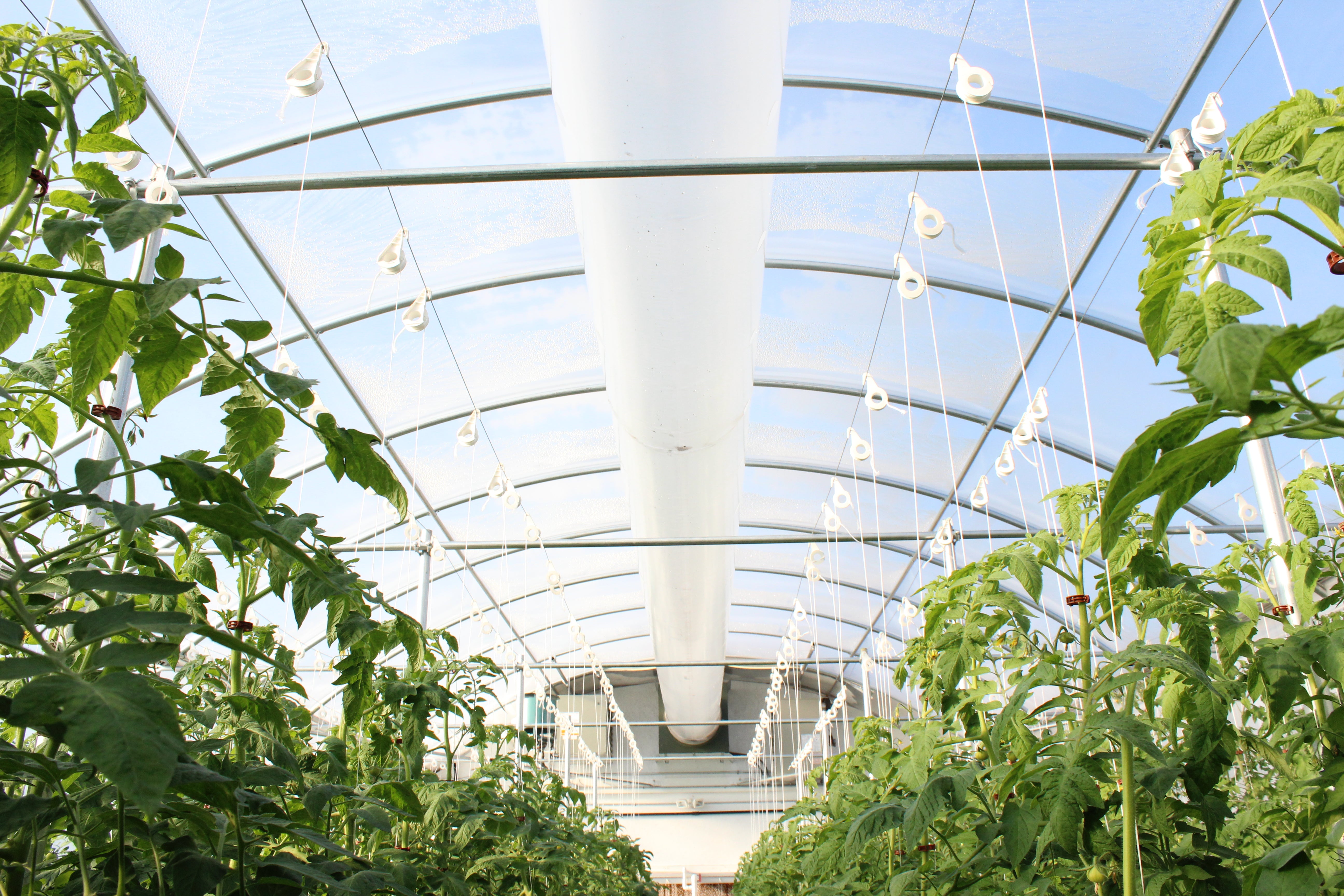Tomatoes in Perlite
Dan Brentlinger
Tomatoes in Perlite A Simplified Hydroponic System
With more and more vegetable growers looking into soilless or hydroponic vegetable production, the need for a simple yet productive growing system has gained attention in recent years. Hydroponic growing systems are based on sterile, inert, and uniform growing media that serve as supports for a water-soluble nutrient solution. Commercial growers have traditionally used one of several hydroponic growing systems: the nutrient film technique, of media-based systems using peat mixes, rock wool, and sometimes even sand or gravel. Horticultural perlite has an excellent record as a propagating and growing medium. It has been used successfully in many applications as a supplement to various growing media for a variety of crops. Now, however, perlite is beginning to be used by itself as an ideal hydroponic growing media. Perlite is produced throughout the U.S., making it cost effective for growers. It can be used for two years, and then spread on farmland or sold to gardeners.
What is Perlite?
Perlite is a volcanic glass formed when lava cools very rapidly, trapping small quantities of water. When the glass is crushed and heated to about 2120 degrees Fahrenheit, the trapped water vaporizes and puffs out the softened granules to form a white mineral foam. Expanded perlite is physically stable and chemically inert. The porous nature of the granules ensures a product that is light to handle, holds large quantities of readily available moisture, and has a very strong capillary attraction for water. Since it is free draining, it is also extremely well aerated. Its neutral pH, negligible nutrient content, and freedom from pests, pathogens, and weed seeds combine to make it an excellent growing medium for hydroponic culture.
Perlite Developed in Scotland
Scottish growers actually brought the perlite system to commercial greenhouse growers. Its major development was one of the major achievements of the West of Scotland Agricultural College. Dr. David Hall, who played a major part in its evolution, considers the technique of using bags of perlite "the main development in growing systems over the last ten years." He says the main objectives in their original research and development program were to simplify systems, maximize yields, and reduce costs. Perlite accomplished all three.
How the System Works
The Dutch Bucket system is very similar in overall design to many greenhouse tomato production systems. It consists of beige plastic buckets which contaion about half a cubic foot of coarse horticultural perlite. The reusable buckets are made from UV plastic for longer life. We prefer beige rather than black so that excessive heat does not build up around the roots of the plant. Two tomato plants are tansplanted into each bucket. The buckets are spaced in a predrilled drain line that catches the runoff nutrient solution. Seedlings are started in rockwool cubes in a warm place. The plants are grown for four to six weeks before being transplanted into the perlite in the buckets. The Dutch Bucket has a shallow reservior on the bottom where a constant supply if nutrient solution is maintained in the perlite. The water taken up by the plant's transpiration process is rapidly replaced by capillary rise through the perlite from the reservior in the bottom. The moisture level in the perlite is maintained by the controlled feed system. This provides for adequate water and fertilizer supply.
tomatoes hydroponics hydroponic hydroponic tomatoes